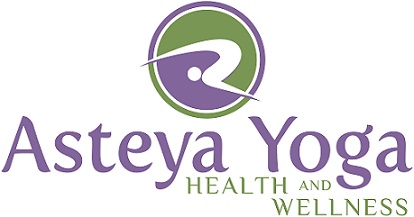Frequently Asked Questions

Q: I want to start a yoga practice but I don’t know how. Where do I begin?
A: Start by attending a Gentle or Beginner class, or schedule a private consultation with a Registered Yoga Teacher (RYT-200, RYT-500 or E-RYT). These teachers have been trained in a certified program to understand the needs of all students, especially those who are just beginning and may need modifications. As a new student, the most important thing to remember is that you are not alone, and you won’t be judged for what you can and can’t do.
Q: Ok, I am coming. What do I wear and what do I bring? And should I eat a large meal before I come?
A: Wear comfortable clothes. It is best to wear sweats and layers that can be removed as you warm up. Bring a Yoga mat (most studios have spares, if you don’t have one) and water to drink. It's a good idea to have a light snack (an apple, a piece of cheese, or a yogurt) 30-60 minutes before class.
Q: What should I expect from my first Yoga class?
A: In Yoga, many students find that they are working muscle groups that haven’t been stimulated in a while. Even though you may be moving slowly, you will find that yoga can be physically challenging and that you may be a little sore the next day. Like any exercise plan, as you progress, you will find that things get a little easier each time. However, even after the first class, most will state that they leave class feeling better than before they started. Many say that they feel energized yet relaxed. Lots of people sleep better on the nights they practice.
Q: Can I get in shape or lose weight from doing Yoga?
A: You can definitely get in shape from a frequent (at least 2-3 times a week) practice. Yoga incorporates muscle strengthening and stretching, and many of the more advanced classes (like “Power”) yoga offer a good “cardio” workout. You can also lose weight. Yoga teaches us to be mindful, and as we increase our yoga practice “on and off the mat,” this mindfulness translates to our eating habits. When we become more mindful of what we eat, we gravitate towards healthier foods and smaller portions. If your goal is to get in shape or lose weight, consult with s Registered Yoga Teacher to see what she recommends.
Q: I want to try Yoga but I already do a lot of sports, and I go to the gym. Can Yoga help my other exercise/sports routines?
A: Yoga is a wonderful complement to other exercise/sports programs. It offers a wonderful stretching/releasing therapy for muscles/joints/ligaments. Many athletics programs in school systems are offering yoga for their athletes. Many runners will find that the strengthening, stretching and breathing exercises help their running routine.
Q: Ok, I attended my first class. You’re right, I loved it: I was sore the next day but I felt great! What is the deal with the breathing? How do I know if I am doing it right and what if I can’t do it?
A: Yoga is really the only exercise that incorporates the breath. In all classes the breath flows with the poses. The philosophy in many classes is “one movement, one breath.” In Yoga, the inhalation comes with expansion, opening, extending, or stretching (standing tall, arms over head). The exhalation comes with closing, flexion, or folding (bending over, twisting). However, it is more important to feel comfortable as you practice, and as you get more comfortable, the breath will come.
Q: Now that I am a Yoga expert I want to try different classes. There are so many different kinds of Yoga. How do I choose the right style for me?
A: A good teacher will tell you that all Yoga stems from the same origin – a practice that is almost 3,000 years old and incorporates the same 1,000 poses, breathing and relaxation techniques, and lifestyle changes to improve physical and mental health. Many practitioners have put their own spin on yoga to make it theirs (Bikram, Baptiste, etc), claiming that their way is the only way to practice. In truth, it all comes from the same place and all Yoga is very similar. The best practice for you is to find a studio that is convenient, affordable, comfortable, clean, and has instructors that are well trained and teach in a way that suits you.
Q: What is Asteya and what does it mean?
A: Asteya (“Ah-STAY-ah”) is the Sanskrit word for “non-stealing.” It is one of the Niyamas, the personal observances on the Eight Limbs of Yoga. (http://www.expressionsofspirit.com/yoga/eight-limbs.htm)
Asteya’s philosophy is that Yoga is based on compassion for others and generosity of self. An exercise that was born in the town squares in India, with no special equipment or fancy clothes can be practiced by everyone. Therefore, one should be able to afford a wellness program and that cost should not prohibit fitness. At Asteya we honor one community program each month, and class participants can make a donation in lieu of payment.

